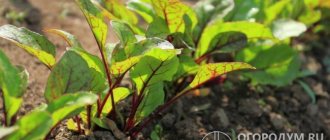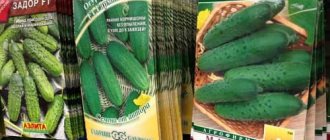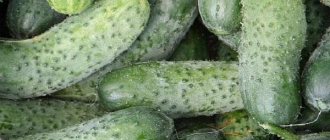Paprika is not difficult to make with your own hands. Plant a suitable variety of pepper in your garden bed, and use the resulting harvest to make a spicy red powder to add aroma, special flavor and color to your favorite dishes.
Paprika is a spice (red powder with a slightly bitter taste), it is prepared from annual capsicum. This type of pepper (Capsicum annum var. longum), as well as the Hungarian variety of “cherry” pepper (Capsicum annum var. longum Grossum), unlike sweet bell peppers, are not eaten fresh as a vegetable or in various dishes; they are used dry, powdered as a spice.
Paprika - overseas guest
Pepper came to Europe from South America, first it was brought to Spain and Portugal, later, in the middle of the 16th century, it appeared in Southern Germany, Austria, Hungary, and spread to the countries of the Balkan Peninsula, which were under Turkish rule. In Russia it was grown under the name “Turkish pepper”.
The plant of tropical origin turned out to be very flexible and adapted to the climate of another continent, and many local varieties with varying degrees of pungency, shape and color of the fruit were created.
Paprika in many languages refers not only to the red powder, but also to the plant that is used to produce the spice. Most often, paprika is associated with Hungary, this country is the leading producer of the spice in the world, and paprika is considered the most famous Hungarian product abroad, the so-called “hungaricum”.
At first the plant was used as an ornamental plant; it was first grown in the monastery garden in Szeged. Then the medicinal properties of the burning fruit were discovered; during the cholera epidemic in 1831, they were used as a prophylactic.
It is known that the alkaloid capsaicin extracted from pepper has an anti-inflammatory effect, and the fruits are very rich in vitamin C. By the end of the 19th century, pepper began to be used as a spice in cooking and to prepare a bright red powder. The relative cheapness of paprika made it popular among both wealthy and poor people; it served as an affordable substitute for expensive black hot pepper.
Paprika at the Budapest market
Two cities in southern Hungary are vying for supremacy in paprika production. Szeged is considered one of the main centers for pepper cultivation; the first large mills appeared there; three types of sweet and hot paprika are produced in this region. Kalocsa is famous for its pink paprika with a semi-hot flavor, and pepper cultivation and processing expanded in the area around the town after the First World War.
Landing rules
In the middle climatic zone, paprika is planted only by seedlings - that is, it is necessary to first grow seedlings from seeds, and only then plant them in the garden. The only exceptions are the southern regions with a hot climate.
Seeds can be purchased in specialized stores, or collected yourself.
Sowing work is carried out at the end of February or beginning of March. Wrap the seeds in a damp cloth and leave for several days to germinate. Place the sprouted planting material in a weak solution of potassium permanganate for half an hour for disinfection. And at the final stage of preparation, it is advisable to keep the seeds in a growth stimulator for better germination. Now you can start planting.
The soil for planting is prepared as follows: mix 2 parts of garden soil and peat and 1 part of humus and sand. Mix all ingredients and freeze well. Next, to enrich the soil, add wood ash at the rate of 1 cup per bucket of soil. You can enrich the soil with a mixture of potassium, nitrogen and phosphorus fertilizers: in this case, take 20 g of potassium and nitrogen fertilizers and 40 g of phosphorus fertilizers.
Prepare plastic cups with fertile soil in advance (any other containers are possible). Make a 2 cm depression in the soil and drop a few grains at a time. Cover with soil, compact lightly and water with water at room temperature. Cover the containers with a transparent material (glass or film) and place in a warm, well-lit place. The covering material should be removed for some time every day for ventilation, and the soil should also be moistened regularly. But you shouldn’t overdo it with watering, as the sprouts may rot. When the sprouts hatch, remove the film or glass altogether.
When 2-3 leaves appear on the sprouts, it must be pruned, that is, each sprout should be planted separately so that the roots can receive all the necessary elements from the soil and develop normally. The sprouts are carefully transplanted into prepared containers with fertile, moist soil along with clods of soil on the roots. Lightly compact the soil and water the seedlings.
Now the sprouts should receive enough sunlight (at least 12 hours a day). We must also not forget about regular watering. For 2 weeks after the seedlings are supposed to be planted in the garden, hardening procedures will be useful - for this, it is advisable to take the containers outside every day and leave them for several hours.
When the height of the seedlings reaches 20 cm, they can be safely planted in open ground.
To get a rich pepper harvest, you need to choose a good place to grow it. Pepper does not like drafts, windy areas, direct sunlight and very hot air. Therefore, the place should be protected from the winds and slightly in the shade.
The selected area must be prepared in the fall by digging and fertilizing. And before planting, it needs to be loosened and soaked in potassium and phosphorus fertilizers.
Peppers are transplanted in late May - early June. Prepare holes in the soil at a distance of 35 cm from each other. The distance between the beds is about 45 cm. The seedlings are carefully removed along with a lump of earth on the root and transferred to the hole. The stem is buried down to the first lower leaves, covered with soil and compacted. At the end, be sure to water it with water at room temperature and install long pegs next to each bush, to which they will be tied in the future.
Types, varieties and properties of paprika
Drying paprika in garlands
To obtain paprika in Hungary, several varieties and hybrids of pepper are used: Szentesi Cherry Pepper with round fruits 2-3 cm in diameter with a fiery taste; Hirös F1 with large, hanging, fleshy fruits 16-18 cm long; Szegedi 179 with fruits 12-15 cm long, rich in red pigment; Kalocsai 662 with fruits 10-15 cm long, growing upward, with a sweet, mild taste and high pigment content, and others.
There are several types of Hungarian paprika, which differ in taste and color. The taste varies from spicy to sweet and smoky, and the color ranges from pink, pale red or yellow to brown-red. Based on physicochemical and organoleptic properties, Hungarian paprika is officially divided into four types: special, gourmet, sweet and pink. Based on the content of the alkaloid capsaicin, they are divided into non-acute (no more than 100 mg/kg), mildly acute (from 100 to 200 mg/kg) and acute (more than 200 mg/kg).
To produce semi-hot and sweet paprika, seeds and seed walls are removed from the fruit, which reduces the pungency. Some manufacturers add hot chili peppers to paprika, as well as peppers grown in other countries, but this product cannot be called Hungarian paprika, which is regulated by law.
Hungarian goulash with paprika
Paprika is used in traditional Hungarian dishes such as chicken paprikash, goulash, and is added to the famous “winter salami” from Szeged (Téliszalámi). Hungarian paprika is not too hot, has a pleasant taste and rich aroma, it is used to flavor soups, meat and vegetable dishes, it can be used to decorate sandwiches, potato salads, omelets, and add to confectionery to add color.
Classification of sweet peppers by shape
In turn, sweet peppers divided among themselves according to the shape of the fruit into:
- trunk-shaped;
- cubiform;
- gogoshari type or tomato-shaped.
Proboscis peppers have elongated fruits weighing from 150 to 200 g with a pulp thickness of up to 4 mm. These varieties of peppers are ideal for making salads, stuffed or canned peppers.
Cube peppers have the longest ripening period. It looks like a cube, not square, but with clearly defined edges. Due to its long development period, it is used mainly for canning or freezing for the winter.
Its pulp is very fleshy, juicy, and tasty. The fruits are large, reaching up to 200 g in weight. The colors are different, like all sweet peppers.
Gogoshar type or tomato-type pepper Its fruits are very similar in shape to tomatoes. They ripen quickly. That’s why there are early-ripening or mid-ripening varieties.
The fruits of tomato-shaped peppers go well with the summer table; they are great for making stuffed peppers or freezing peppers with stuffing inside.
The flesh of this round pepper is fleshy and very sweet. For all types of cooking, its shape is always compact, making it ideal for portioned meals.
Spanish paprika pimenton
Another popular producer of paprika is Spain, but in this country the product is called pimenton, or smoked paprika. Franciscan monks returning from missionary trips to South America brought pepper seeds with them and planted them for the first time in northern Spain.
Pepper, from which spice is obtained in Spain, is distinguished by large fruits 10-20 cm long with thick fleshy walls, while the fruits of Hungarian pepper are smaller (5-12 cm) with thin walls.
The product is so important for Spanish cooking and the quality requirements are so high that pimenton is regulated by region of origin, like wines, it is produced in Extremadura and Murcia. In 2010, pimenton was included in the UNESCO Intangible Heritage List as an essential part of the Mediterranean diet.
Spanish smoked paprika Pimenton
Spanish paprika is called smoked or smoky. The collected pods are cut, cleared of seeds and membranes, dried and then smoked for two weeks over oak sawdust, which produces a rich smoky flavor. The dried raw materials are ground into powder.
There are several types of this product. Sweet smoked pimenton (dulce) has a mild and sweet taste, it is suitable for those who avoid spicy dishes, it is added to omelettes, dishes made from potatoes, beans, rice, and vegetables. Semi-hot (agridulce) combines smoky flavor with heat and is used in dry-cured meats, stews and soups. Pimenton picante has a strong aroma and dark red color and is a must-have in traditional Spanish paella and chorizo. The spice gives any dish a distinct smoky note.
Chili peppers should not be considered a substitute for Hungarian or Spanish paprika. This popular seasoning in Mexico and India is hot, but has a less strong and deep flavor. Make sure that you have exactly the spice on your table that is required by the recipe, since if you replace the ingredients, the end result will be completely different.
Rules of care
Further care of the bushes consists of watering, fertilizing, and preventing diseases and pests.
After planting in the garden, paprika is watered approximately once a week. For 1 bush, 1 liter of water is enough. The water temperature should be about 20 C°, and after each watering you need to loosen the soil around the stem so that better aeration of the roots occurs and a crust does not form. To retain moisture in the soil, pepper bushes can be mulched with grass or rotted straw.
Fertilize the soil at least 3 times throughout the entire season.
Nitrogen is required for normal growth and development of plants. Therefore, the first fertilizing is carried out 2 weeks after transplanting the plants onto the bed with preparations containing nitrogen.
Potassium is necessary for the formation of full-fledged fruits. Potassium fertilizers are applied during the flowering period of peppers.
And the third feeding is done during the formation of the first fruits. To do this, dissolve 2 teaspoons of potassium salt and superphosphate in a bucket of water and water the soil around the bushes at the root with the solution.
Peppers are susceptible to common pests such as mole crickets, Colorado potato beetles, slugs, whiteflies and aphids. All pests can be collected manually, and plants are sprayed against aphids with a solution of wood ash.
The most common ailments of paprika are:
- falling ovaries - a solution of boric acid (1 teaspoon per bucket of water) will help to cope with the problem,
- poor fruit development - can be cured with superphosphate or wood ash,
- Yellowing of leaves is caused by a lack of nitrogen. Dissolve 1 teaspoon of urea in 10 liters of water and spray the bushes.
Read also: Prestige for potatoes: processing instructions and dosage
The harvest is harvested as the fruits ripen, but slightly unripe paprika can also be removed to remove excess weight from the bush.











